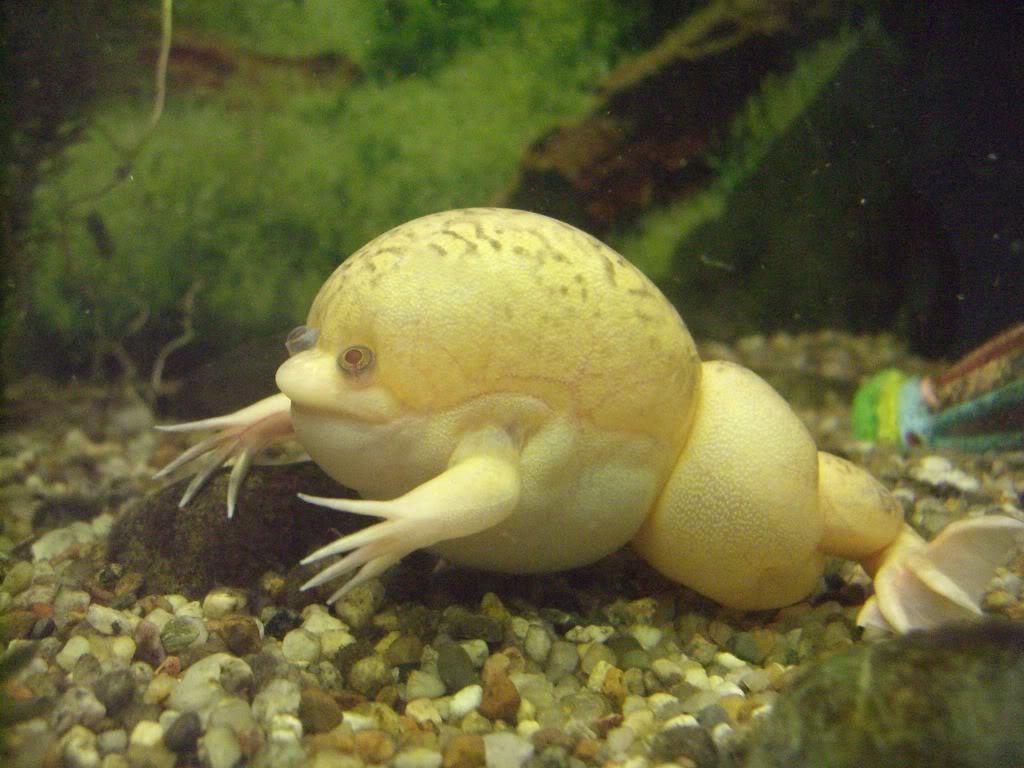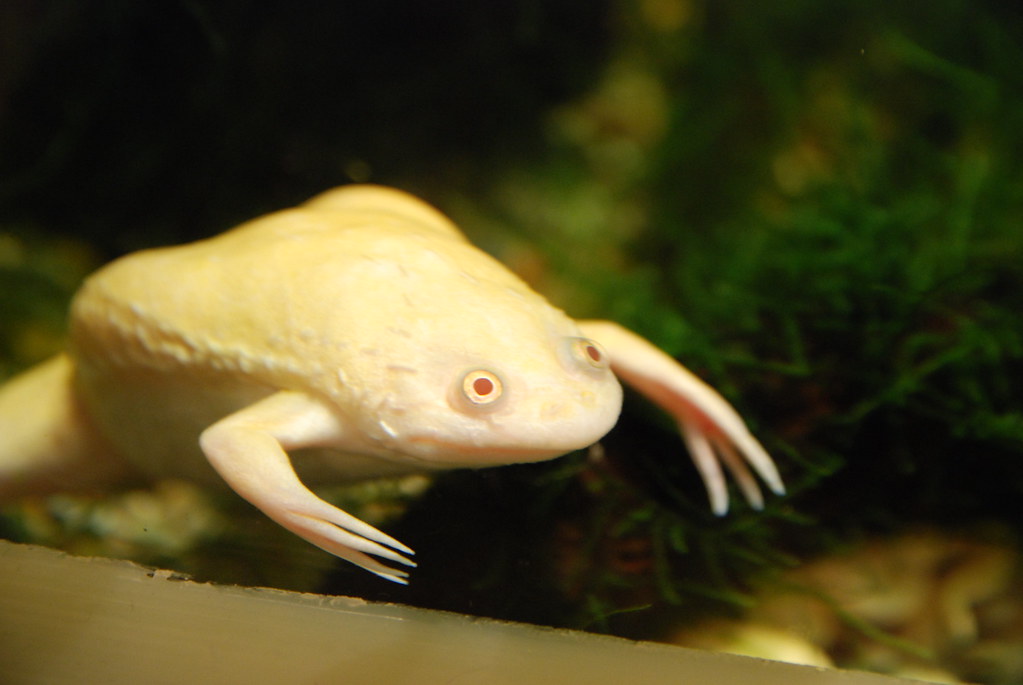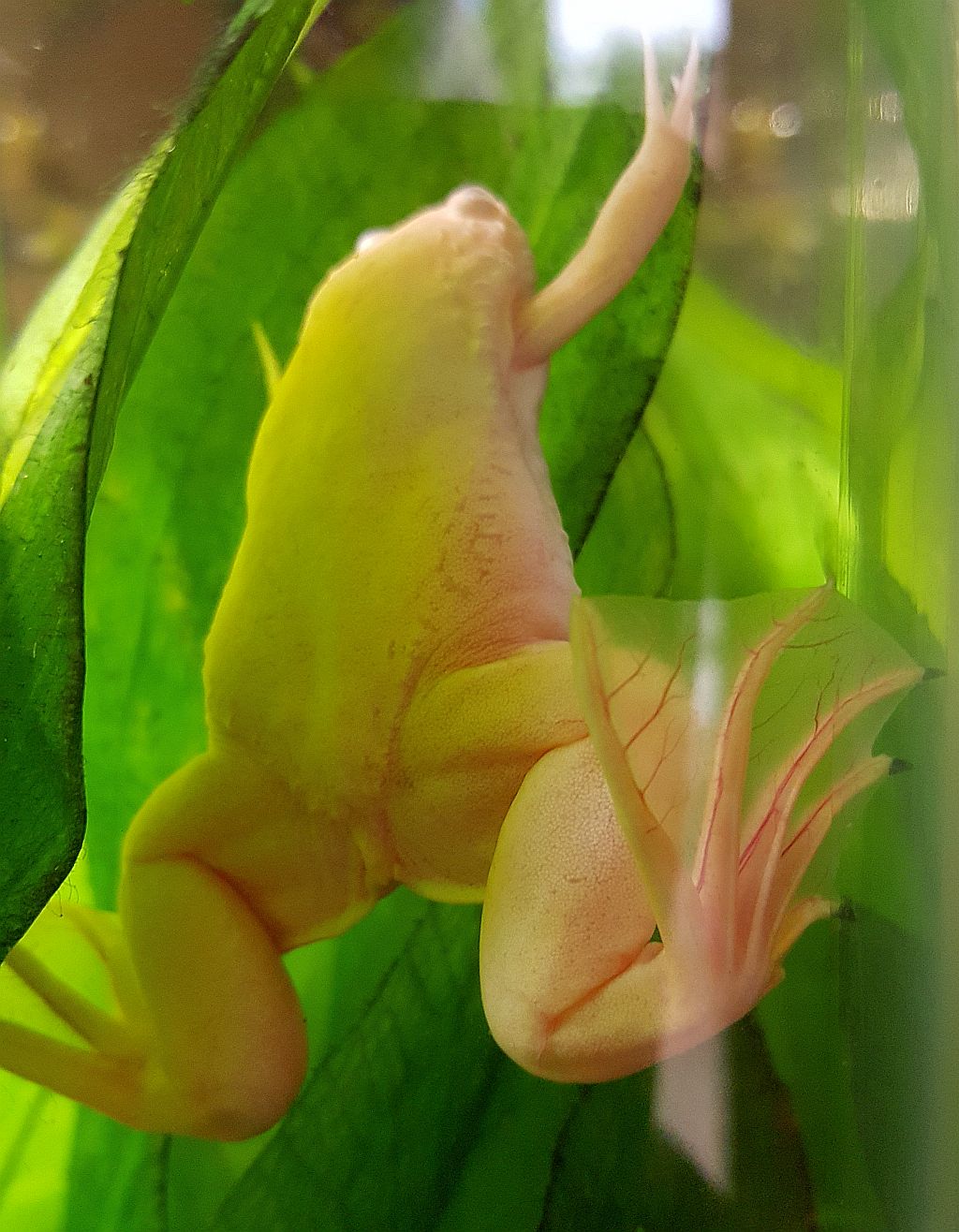Albino African Dwarf Frog
An albino African dwarf frog can make a unique and interesting addition to any aquarium. Their bright white coloration makes them stand out amongst other fish and aquatic creatures. But there's more to these fascinating amphibians than just their appearance.
Pain Points of Albino African Dwarf Frogs
One common issue that owners of albino African dwarf frogs face is their sensitivity to water conditions. These frogs are highly susceptible to changes in water temperature and quality, so it's crucial to maintain a stable and clean environment for them to thrive in. Additionally, these frogs are carnivorous and require live food, such as small insects, which can be a challenge for some owners to provide.
Target of Albino African Dwarf Frogs
Albino African dwarf frogs are native to sub-Saharan Africa and are typically found in bodies of water such as swamps, rivers, and ponds. In the wild, they play an important role in controlling insects and other aquatic pests. As aquarium pets, they provide a unique and entertaining addition to any tank.
Main Points about Albino African Dwarf Frogs
Along with their striking appearance, albino African dwarf frogs have unique behaviors that make them fascinating to observe. They are social creatures and thrive in groups, so it's recommended to keep them in pairs or small groups. Their diet consists of live foods such as brine shrimp, bloodworms, and small insects. It's essential to maintain a stable and clean water environment for them to stay healthy. When it comes to their habitat, live plants can provide not only a natural and beautiful environment but also a place for the frogs to hide and rest.
Albino African Dwarf Frogs: Personal Experience
I first became enamored with albino African dwarf frogs when I saw one at my local aquarium store. Its pure white skin and webbed feet were unlike anything I had seen before. I decided to take one home and soon learned that I had to be diligent in maintaining its water conditions and providing live food. However, it was all worth it to see this unique little amphibian swim and play in its tank.

One of my favorite things to watch was how the frog interacted with the live plants in its tank. It would hide among them and then suddenly dart out to catch a passing insect or swim to the surface for a breath of air. I would spend hours observing its behavior and learning about its habits.
Caring for Albino African Dwarf Frogs
When it comes to maintaining the health and well-being of albino African dwarf frogs, there are several things to keep in mind. They require a stable water temperature between 72-78°F and a pH level between 6.5-7.5. It's essential to have a good filtration system and perform regular water changes to prevent the accumulation of toxins. When it comes to feeding, small insects and live food are essential components of their diet, but pellets and flakes can also be offered as supplements.

The Unique Characteristics of Albino African Dwarf Frogs
One unique characteristic of albino African dwarf frogs is their ability to regenerate limbs. If a frog loses a foot or hand, it can regrow a new one. Additionally, these amphibians are highly adaptable and can survive in a wide range of water conditions, making them an excellent choice for new or experienced aquarium owners.
Tips for Keeping Albino African Dwarf Frogs Happy and Healthy
To keep albino African dwarf frogs healthy and thriving, it's important to maintain a stable and clean environment. Regular water changes, proper filtration, and live food are all essential components of their care. Providing hiding places and live plants can make their habitat more stimulating and enjoyable. It's also recommended to keep the water level low to prevent injury or drowning, as these frogs need to come up for air regularly.
Question and Answer about Albino African Dwarf Frogs
Q: Can albino African dwarf frogs live with other fish?
A: Yes, albino African dwarf frogs can live peacefully with other non-aggressive fish, such as tetras or guppies. However, it's important to avoid larger fish or those with a tendency to nip at their fins or tails.
Q: Do albino African dwarf frogs need a heater?
A: Yes, albino African dwarf frogs require a stable water temperature between 72-78°F. A heater can help maintain this temperature and prevent fluctuations, which can be harmful to the frog's health.
Q: How often should I feed my albino African dwarf frog?
A: Albino African dwarf frogs should be fed small amounts of live food daily, such as brine shrimp or bloodworms. Pellets or flakes can also be offered as supplements, but live food should make up the majority of their diet.
Q: How can I tell if my albino African dwarf frog is male or female?
A: It can be challenging to tell the sex of albino African dwarf frogs, as they do not have external genitalia. However, males may be slightly smaller and have a more elongated cloaca than females.
Conclusion of Albino African Dwarf Frogs
Albino African dwarf frogs may have more specific care requirements than some other aquarium inhabitants, but their unique appearance and fascinating behaviors make them well worth the effort. By providing a stable and clean environment, live food, and a variety of hiding places and live plants, you can ensure that your albino African dwarf frog thrives and brings a little piece of Africa to your home aquarium.
Gallery
AFRICAN CLAWED FROG *ALBINO* (Xenopus Laevis) – Aquarists Across Canada
Photo Credit by: bing.com / albino clawed laevis xenopus frogs
Albino African Clawed Frog | Tropical Fish Keeping

Photo Credit by: bing.com / frog clawed african albino fish tropical keeping xenopus laevis water visit
The Jungle Store: Albino Frogs

Photo Credit by: bing.com / albino frogs finest asia
Albino African Clawed Frog Wallpapers HD Download

Photo Credit by: bing.com / frog albino clawed african frogs wallpapers fish eating google pet quality high search
African Clawed Frog (albino) | African Clawed Frog (Xenopus … | Flickr

Photo Credit by: bing.com / frog african clawed albino xenopus